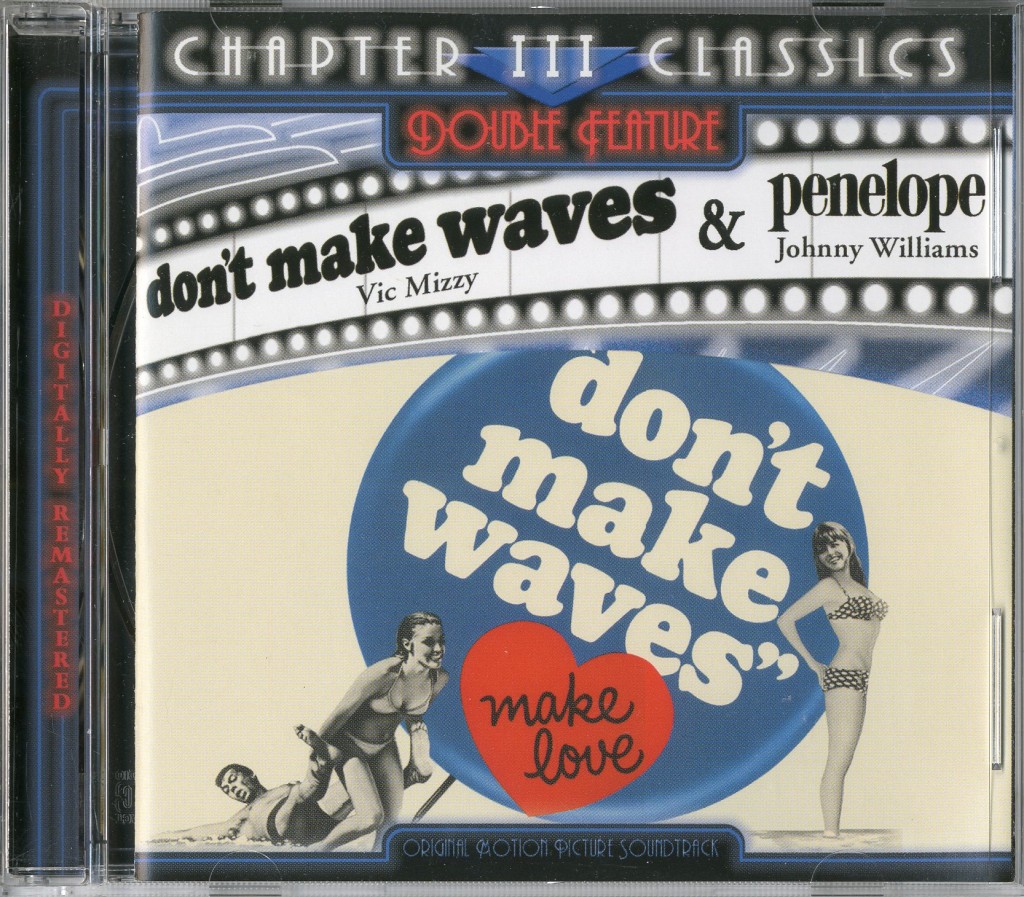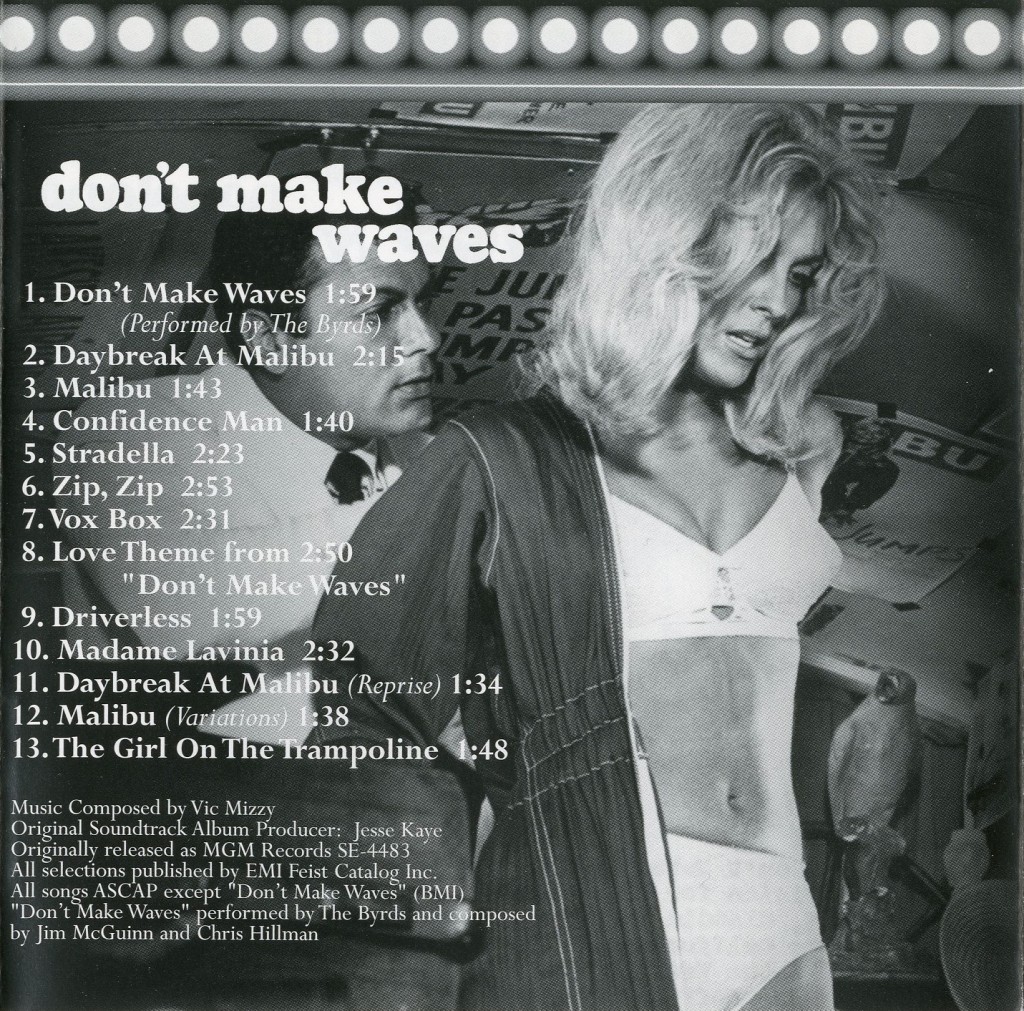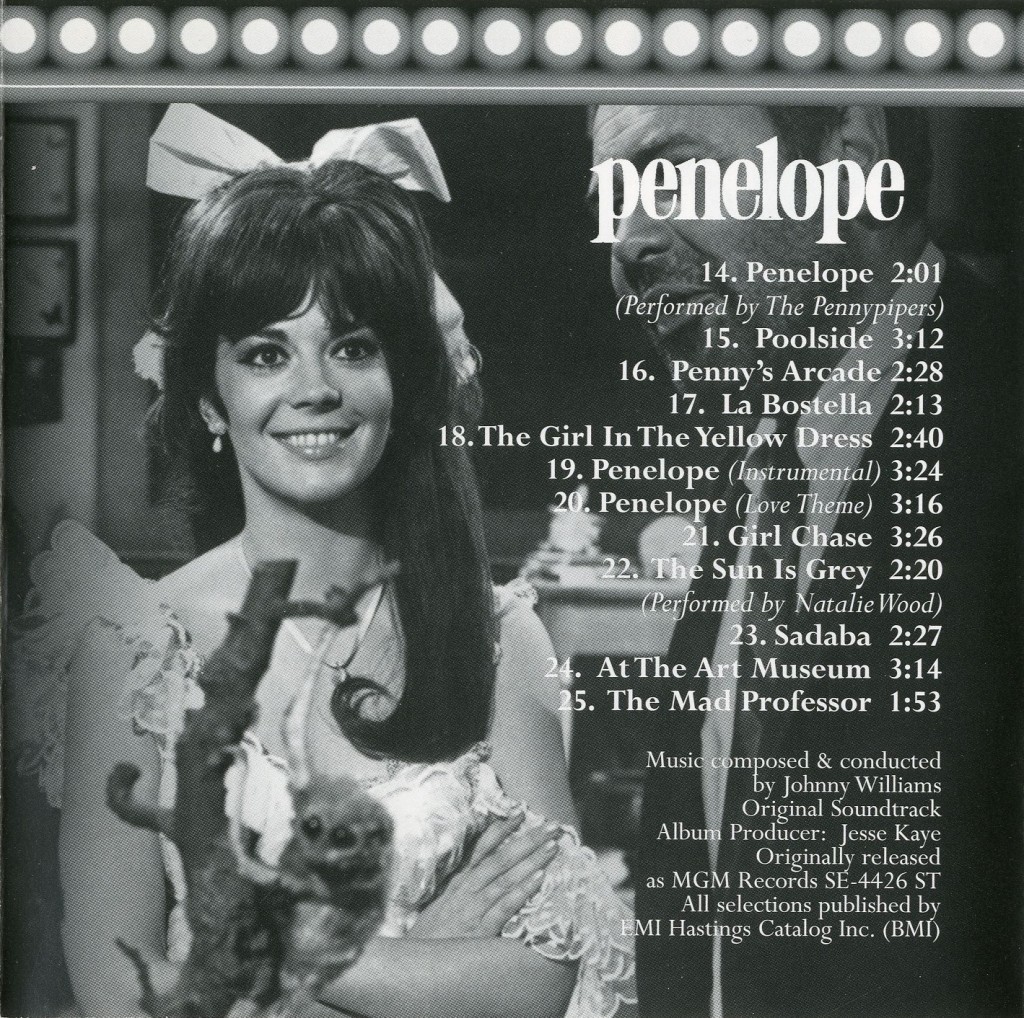For my second foray into the world of instrumental soundtrack reviewing, I have chosen another double feature, again from the psychedelic era of the mid-1960s. This duo features two composers, one of whom has gone onto greatness, while the other is not well known outside of cinema circles.
Vic Mizzy was a prolific scorer of comedy features in the 1960s; he most often scored Don Knotts comedies like The Reluctant Astronaut, The Ghost and Mr. Chicken and The Shakiest Gun in the West, with bouncy melodies, whimsical motifs and sound effects. Mizzy also did a great deal of television work, supplying the medium with the themes to “The Addams Family,” “Green Acres,” “Temperatures Rising,” and “The Don Rickles Show,” among others.
His work on Don’t Make Waves (1967) is similar to the scores he wrote for the Knotts comedies, yet deeper and more profound. A few of the tracks in the middle of the score are lighthearted, jaunty cuts that recall the Knotts work because star Tony Curtis has his share of slapstick moments as he tries to woo lovely beach bunnies. But Mizzy could rock out as well, and his main title theme, “Daybreak at Malibu” proves it. A snazzy mix of guitar, strings, brass and percussion, this track is my favorite Mizzy track of all time, with my only complaint being that it ends too soon, when the titles do.
That theme is reprised in the eleventh track with interesting variations, while the final track, “The Girl on the Trampoline,” is an ode to Sharon Tate bouncing in slow motion on a trampoline at the beach. Tate would be murdered soon after the release of this movie, which gives this track a somber, nostalgic quality unintended at the time of its writing. Mizzy’s soundtrack is a good one, but those three tracks are the standouts to me.
John Williams, still being billed as Johnny Williams, is the author of the score for Penelope (1966), a kleptomaniac caper comedy with Natalie Wood. It’s one of his earliest features and highlights his skill with melodies and the variations which reflect the changing moods of the motion picture. He wrote a catchy title tune (with lyrics by Leslie Bricusse) which is performed by the Pennypipers. Variations of this theme are heard in the instrumental version and the love theme.
The love theme establishes the title theme’s “Who is Penelope?” refrain as a free-standing melody and other lushly orchestrated tracks such as “Penny’s Arcade” and especially “The Girl in the Yellow Dress” use this truncated theme as a basis while charting their own lyrical courses. These tracks fully demonstrate John Williams’ delightful versatility, as they effectively develop one basic theme into an interrelated mix of music, using techniques like dramatic key changes, tempo variations and an eclectic mix of instruments, from traditional strings and brass to high woodwinds, guitars, percussion and a xylophone to create a bouncy, sunny sound.
My favorite track is the moody melody “Poolside,” a dreamlike composition with a swirling counterpoint and a soft, jazzy saxophone solo. Perhaps the most notable track, however, is Natalie Wood’s rendition of “The Sun is Grey,” sung at a beatnik club. Remember, it was five years earlier that Wood was famously dubbed for her role in West Side Story. This song illustrates that Wood could sing, though not with any great range. Thus, this soundtrack not only offers the rare chance to hear her sing, but John Williams’s best early effort. (9:2).



